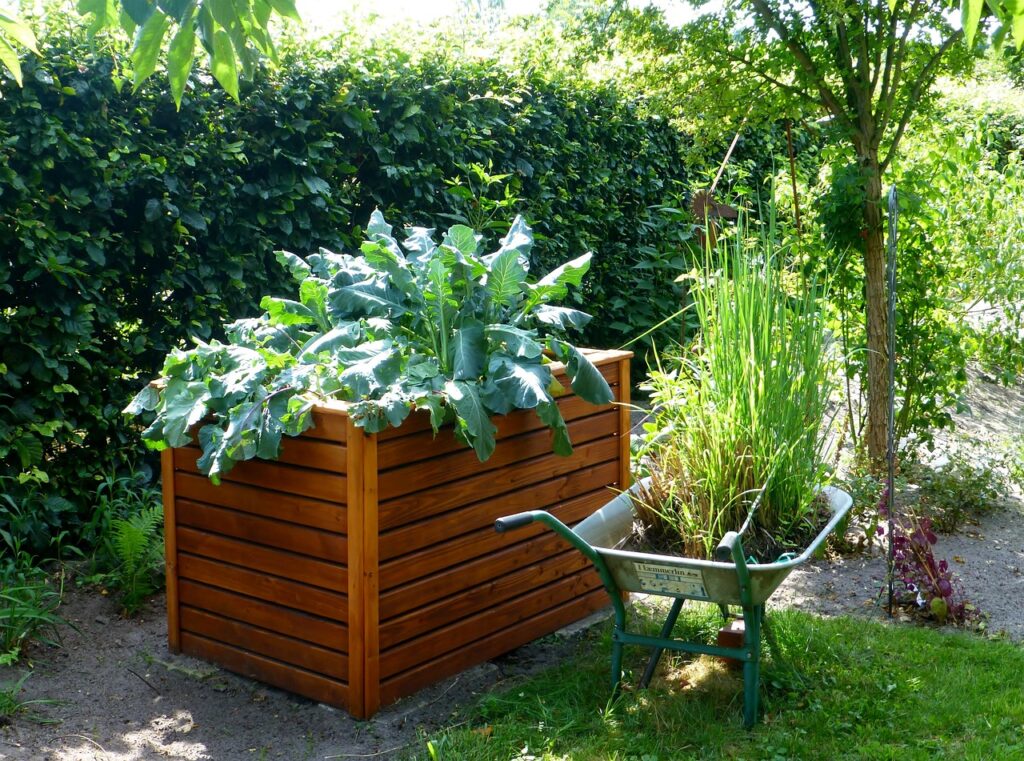If gardening is an art, then raised bed gardens are the canvases that allow your green thumb to paint vibrant strokes of creativity, productivity, and sustainability. When you elevate your gardening space, both literally and figuratively, you are granted the freedom to control the environment in which your plants flourish. So, how does one embark on the journey of constructing these elevated havens of greenery? Grab a cup of your favorite brew and settle in, for we are about to craft gardens that reach for the sky!
Introduction: The Allure of Raised Bed Gardens
Soaring Above Ground Level
Raised bed gardens are more than just a trend; they represent a shift towards more sustainable, efficient, and ergonomic gardening practices. Picture this: a vibrant tableau of lush vegetation, thriving in beds that stand proudly above the ground, offering a bounty that is both pleasing to the eyes and nurturing to the soul.
Have you ever envisioned a garden that defies the limitations of the ground, soaring to new heights of productivity and aesthetic appeal?
Understanding the Benefits: Why Opt for Raised Beds?
A Garden that Stands Tall
Before we delve into the ‘how’, let’s understand the ‘why’. Here’s why raised bed gardens are a gardener’s delight:
- Improved Drainage: Elevated beds allow for quicker water drainage, preventing waterlogged soil.
- Better Soil Control: You get to choose the soil that best suits your plant varieties.
- Ease of Access: Gardening becomes a less back-breaking task with beds at a convenient height.
- Pest Control: Raised beds can deter certain pests and prevent soil-borne diseases.
Aren’t you fascinated by the prospect of a garden that caters not just to the well-being of plants but also to the gardener’s comfort and joy?
Planning Your Raised Bed Garden: A Blueprint for Success
Crafting Your Garden’s Masterpiece
Now, onto crafting your masterpiece. Here’s how to plan for success:
1. Location
- Sunlight: Choose a spot with a minimum of 6-8 hours of sunlight.
- Accessibility: Ensure easy access for maintenance and harvesting.
2. Size and Shape
- Width: Maintain a width that allows you to reach the center without straining.
- Height: Opt for a height that minimizes bending – usually between 1 to 2 feet.
- Length: Tailor the length according to your available space and needs.
3. Materials
- Wood: Redwood or cedar is resilient to rot and weather elements.
- Metal: Corrugated metal or steel offers durability and a modern look.
- Stone: Creates a rustic, durable, and visually pleasing border.
Doesn’t it feel like painting on a blank canvas, where you sketch the initial lines of what promises to be a masterpiece?
Assembling Your Raised Bed: A Step-by-Step Guide
Building Your Green Sanctuary
Roll up your sleeves, for it’s time to construct your green sanctuary:
1. Preparing the Ground
- Clearing the Area: Remove weeds, rocks, and debris from the selected site.
- Leveling: Ensure the ground is level to support the structure evenly.
2. Constructing the Frame
- Measuring and Cutting: Measure and cut your chosen material to the desired size.
- Assembling: Join the pieces to form a sturdy frame, using screws or corner brackets for wooden frames.
3. Installing the Bed
- Placement: Place the frame on the prepared ground.
- Securing: Secure the structure, ensuring it’s level and firmly positioned.
Can you feel the thrill of seeing your vision take a tangible form, one step at a time?
Filling Your Raised Bed: Creating a Nurturing Environment
Laying the Foundation of Fertility
The soul of your raised bed garden lies in the soil. Here’s how to create a nurturing environment for your plants:
- Layering: Start with a layer of cardboard or newspaper to suppress weeds.
- Soil Mixture: Create a rich soil mixture with a balance of topsoil, compost, and well-rotted manure.
- Mulching: Cover the soil with organic mulch to retain moisture and deter weeds.
Are you ready to lay the foundation of fertility, creating a haven where plants can thrive with vigor and vitality?
Planting and Maintenance: Cultivating a Flourishing Oasis
Nurturing Life
Your raised bed is now ready to embrace life. Let’s proceed to planting and nurturing:
- Plant Selection: Choose plants according to the climate, soil type, and sunlight availability.
- Spacing: Arrange plants with adequate spacing to prevent overcrowding and ensure healthy growth.
- Irrigation: Install a drip irrigation system or soaker hoses for efficient watering.
Maintenance Tips:
- Regular Monitoring: Keep a watchful eye for pests and diseases.
- Pruning: Regular pruning encourages healthy growth and yield.
- Fertilizing: Incorporate organic fertilizers to replenish soil nutrients.
Isn’t it exhilarating to see your garden burgeoning with life, an oasis of tranquility and bounty in your backyard?
Conclusion: Reaping the Rewards of Raised Bed Gardens
A Symphony of Growth and Harmony
As you step back to admire your work, a feeling of accomplishment washes over you. Raised bed gardens are not just about growing plants; they are about fostering a deeper connection with the earth, cultivating a sanctuary of beauty and sustenance right in your backyard.
Key Takeaway: Building a raised bed garden is a journey of creativity and harmony with nature. It is an endeavor that promises not just a bounty of produce but also a soul-soothing sanctuary where you can reconnect with the earth.
Are you ready to embark on this fulfilling journey, crafting a living tapestry of lush greens and vibrant blooms, a testament to your love and dedication to gardening?
Happy Gardening!



